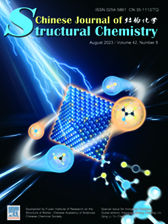
Cover Picture
Tandem electrocatalytic nitrate reduction reaction
Chuanfei Cang, Haoquan Zheng* Submit a Manuscript
Tandem electrocatalytic nitrate reduction reaction
Chuanfei Cang, Haoquan Zheng* Submit a Manuscript
Tandem electrocatalytic nitrate reduction reaction
Chuanfei Cang, Haoquan Zheng*
Chin. J. Struct. Chem., 2023, 42: 100143. DOI: 10.1016/j.cjsc.2023.100143
August 15, 2023
ABSTRACT
This area is still developing with
increasing attention and challenges. As an area perspective, we offer suggestions
for the development of tandem electrocatalytic NO3RR. On the basis
of tandem electrocatalytic mechanisms, scientists could design new electrocatalysts,
such as hybrid materials. Hybrid materials could effectively regulate the
adsorption of N-containing intermediates and Hads. In addition, we should also consider
the influence of mass transfer, active site exposure, etc. in these electrocatalysts
from the view of dynamics. Furthermore, in order to investigate the mechanism
by experimental methods, in situ or operando characterizations, such as UV,
Raman, and IR spectra, could be an option to detect the intermediates during the
reactions and investigate the tandem electrocatalytic mechanism for NO3RR.
Then, the active sites of each step in tandem electrocatalytic NO3RR
could be understood, as well as the rate-determining step.






